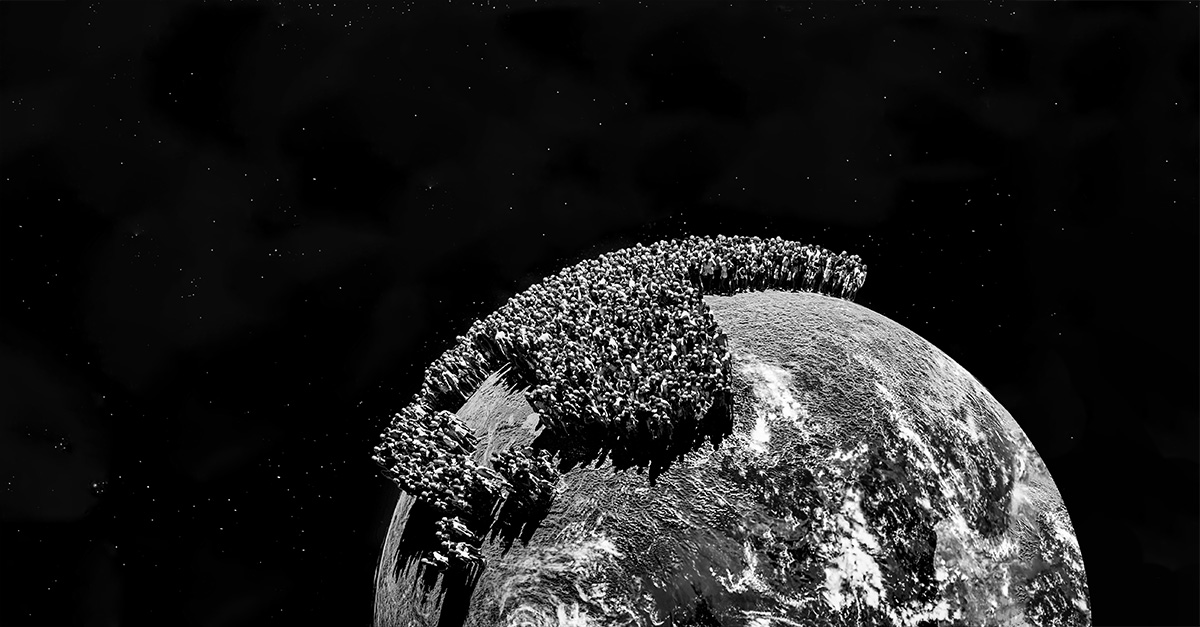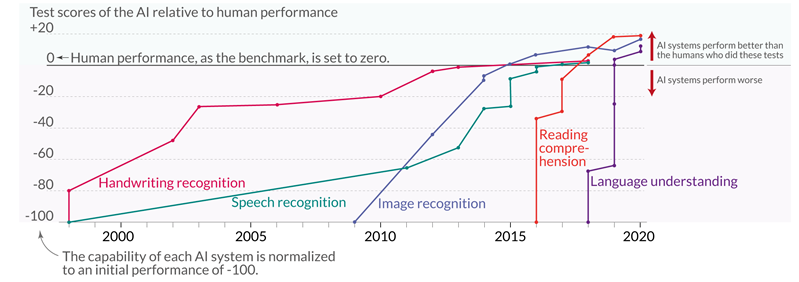For a long time, China was the most populous country but India is set to overtake it this year. When exactly, nobody knows but the UN estimates that by mid-year 1.4286 billion people will live in India while China will “only” have a population of 1.4257 billion. An opposing trend is under way in Germany and, in particular, in Japan. The population of both countries is declining and ageing due to migration. While India is battling youth unemployment, companies in Germany and Japan are complaining about the skills shortage. In the following we will look at these developments; how they could unfold and the potential future implications.
In November 2022, the world population broke the 8 billion mark and that figure is rising by the day. However, the growth rate has slowed considerably in recent years and this trend is expected to continue in future. In fact, when we factor in migration, the population of China is now growing at a slower rate than Germany’s.
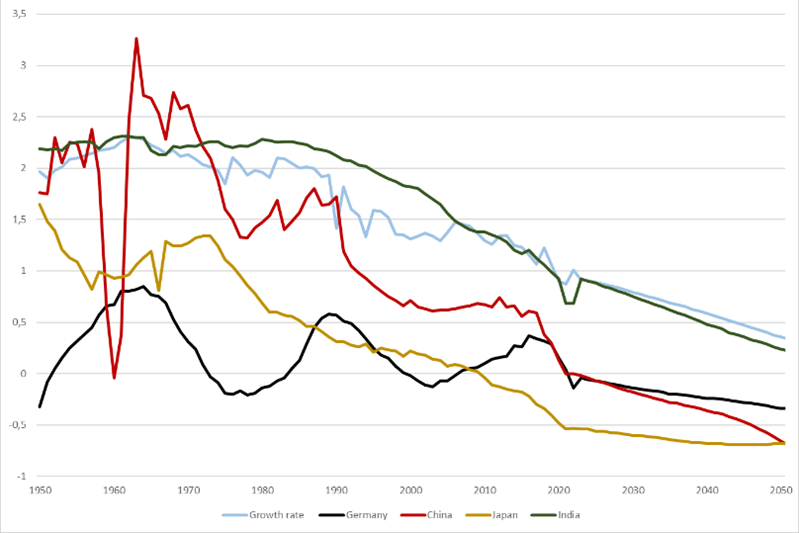
Graphic 1: Population growth rates // Source: United Nations (ourworldindata.org)
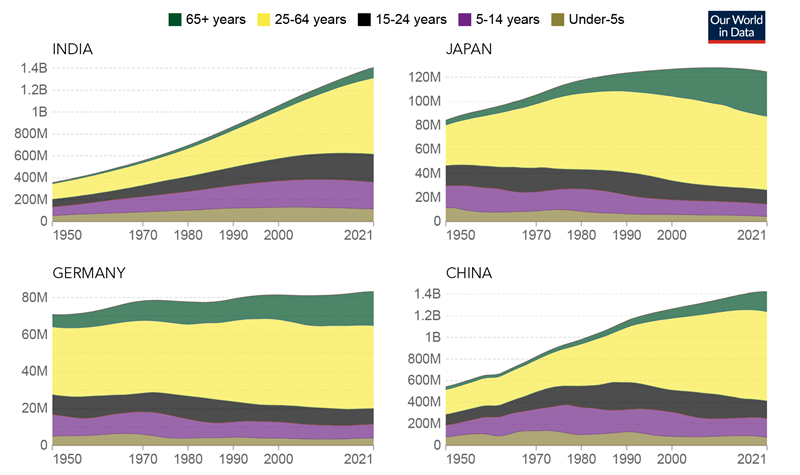
Graphic 2: Population by age group // Source: United Nations (ourworldindata.org)
However, the size of the population is not necessarily the decisive factor when it comes to economic growth; the age structure is also important. Issues such as work productivity or pension and health systems are a product more of the age distribution of the population than its size. This problem will present a major challenge for society and economy both in Japan and Germany in the near future. In the long term, the issue will therefore be how to deal not just with a skills shortage but also with a global shortage of labour. In industry, robotic automation has advanced strongly in recent decades, and this trend is set to continue. As the world’s most important production location, the People’s Republic of China is the leader in industrial robots by some distance. In Japan, automation has made up for some of the labour shortage and global demand is growing annually in the double digits.Companies whose business models are geared towards automation technology and industrial robots have been and are able to benefit from the high level of demand.
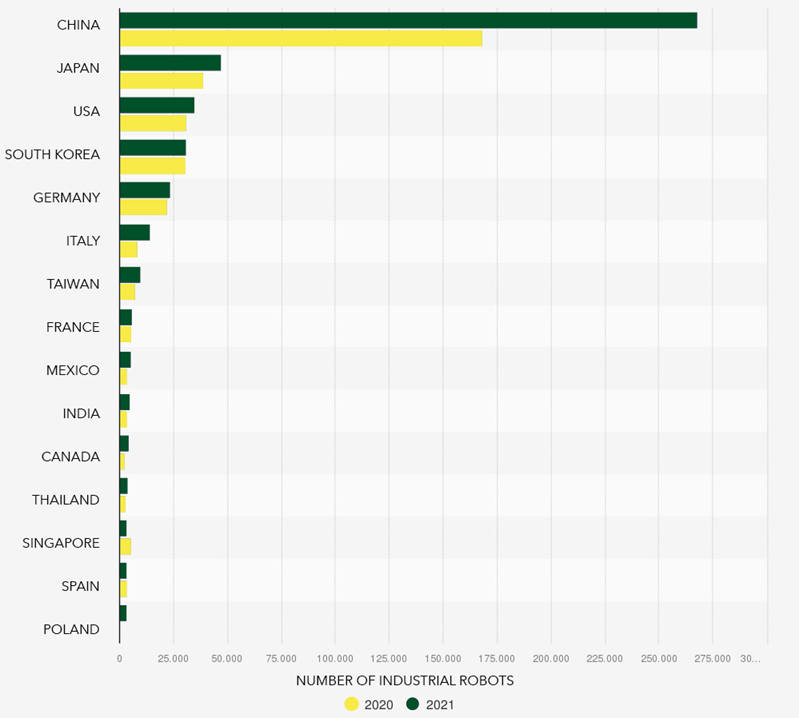
Graphic 3: Sales of industrial robots by selected countries worldwide in 2020 and 2021 // Source: IFR; Statista
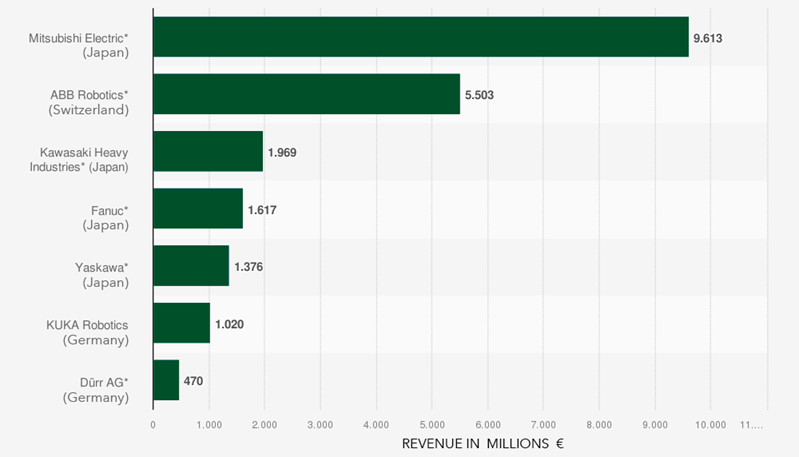
Graphic 4: Major manufacturers of industrial robots worldwide by sales in 2021 (in millions of euros) // Source: Company data; Statista
The Swiss company ABB specialises in the development and manufacture of automation and electrification solutions and offers a forward-looking product range in these areas. With an offering that ranges from robotic and manufacturing automation to power supply systems and electric drives, ABB is a leader in Industry 4.0 solutions.
However, companies in the entire length of the value chain, especially in the area of artificial intelligence (AI), are benefiting from the high level of demand for automation solutions. AI is playing an ever-greater role in automation. The use of new technology can increase productivity and efficiency as well as reduce errors and costs. One example of this is the use of AI in the production industry. In this sector, automated systems with AI technologies can analyse and process data from sensors, cameras and other sources, and thus further optimise production. However, the use of AI is no longer limited to the automation of physical processes; indeed, the public became aware of just how far development has come in a short time when Open.ai opened up access to ChatGPT at the beginning of the year. Already it is easier to replace mental work than physical work. The new version (ChatGPT-4) features further marked improvements in the areas of logic, text and understanding. ChatGPT-4 has passed the US bar exam, scoring in the top 10%, and has also made groundbreaking advances in software development. A skills shortage in professions that call for mental work could therefore be anything but a problem in future, contrary to previous expectations. The obvious beneficiaries are companies such as Microsoft that not only have invested in Open.ai but are also able to integrate ChatGPT into their software and thus, after a long time, offer an extremely competitive alternative to Google’s search engine. As the leading manufacturer of domain-specific processors (GPUs), Nvidia is in a position to provide the essential computing power for the operation of AI and is thus benefiting greatly from its use.
Graphic 5: Language and image recognition capabilities of AI systems have improved rapidly // Source: Kiela et al. (2021) - Dynabench: Rethinking Benchmarking in NLP; ourworldindata.org
In summary, different regions are facing different challenges and tasks in the short and medium term. In the long term, however, the worldwide levelling off in the population growth rate and demographic change will bring about new technologies and innovations that will not only make up for the labour shortage but significantly increase productivity, and is already doing so today.


